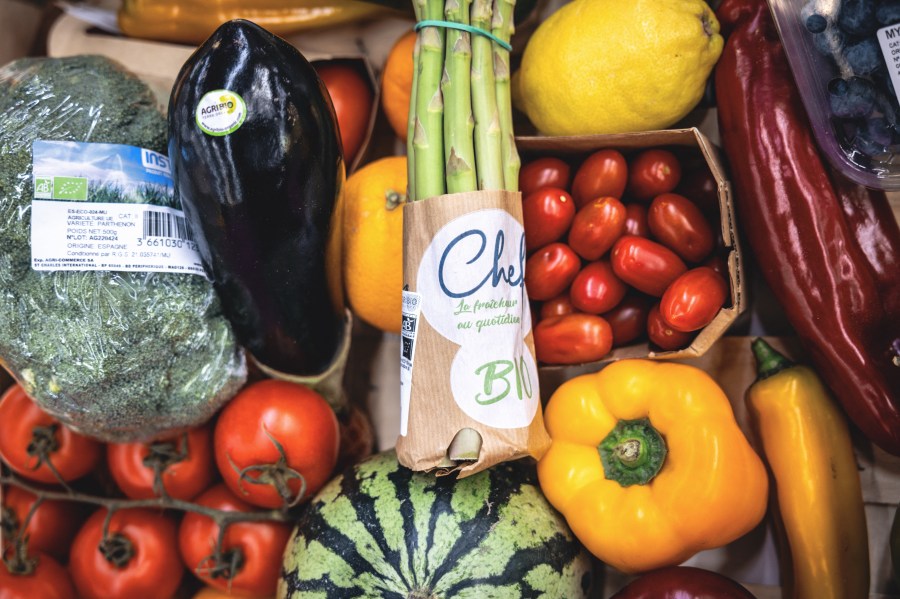HONOLULU (KHON2) — It’s nearly summertime. That means keiki at home with snacking urges and desires.
But more often than not, the fruits and vegetable we buy in the grocery stores or at farmers’ markets aren’t quite to the ripeness they need to be in order to satisfy that sweet tooth.
So, KHON2.com decided to take a look at some of the most popular fruits and vegetables and how to determine their ripeness or how to ripen once you get them home.
Summer Fruits
Mangoes
Picking ripe: Look for mangoes that are slightly soft to the touch and have a sweet fragrance. The skin color may vary from green to red or yellow, depending on the variety.
Ripening: If unripe, place them in a paper bag at room temperature. Adding an apple or banana can speed up the process.
Pineapples
Picking ripe: A ripe pineapple will have a sweet smell at the base and feel slightly soft. The color should be golden yellow, especially at the base.
Ripening: Pineapples don’t ripen significantly after being picked but can soften a bit. Store at room temperature for a day or two before refrigerating.
Lychee
Picking ripe: Choose lychees with bright red skin that yield slightly when pressed. They should feel heavy for their size.
Ripening: Lychee does not ripen after being picked. Store them in the refrigerator to prolong freshness.
Papayas
Picking ripe: Ripe papayas will have mostly yellow skin and yield to gentle pressure. They should have a sweet aroma.
Ripening: Leave unripe papayas on the counter at room temperature. Once ripe, refrigerate to extend shelf life.
Bananas
Picking ripe: Look for bananas that are firm with no green on the stem. They should have a few brown spots on the skin.
Ripening: To ripen bananas, keep them at room temperature. To speed up ripening, place them in a paper bag with an apple or banana.
Starfruit (Carambola)
Picking ripe: Ripe starfruit will be mostly yellow with a hint of green. They should be firm with slightly brown edges.
Ripening: Leave starfruit at room temperature until they turn fully yellow. Refrigerate once ripe.
Passion Fruit (Lilikoi)
Picking ripe: Ripe passion fruits are wrinkled and slightly heavy for their size. The skin may be purple, yellow or red depending on the variety.
ripening: Keep at room temperature until the skin wrinkles. Store in the refrigerator once ripe.
Avocados
Picking ripe: Ripe avocados yield to gentle pressure and have a dark, almost black skin.
Ripening: Place unripe avocados in a paper bag at room temperature. Adding an apple or banana speeds up the process.
Guava
Picking ripe: Ripe guavas are soft to the touch and emit a strong, sweet aroma. The skin color varies depending on the variety.
Ripening: Leave guavas at room temperature until soft. Refrigerate to prolong freshness.
Breadfruit (‘Ulu)
Picking ripe: Look for breadfruit with slightly soft spots and a fragrant smell. The skin will start to brown when ripe.
Ripening: Leave at room temperature until soft. Store in the refrigerator once ripe.
Watermelon
Picking ripe: Choose watermelons that are symmetrical, heavy for their size and have a creamy yellow spot on one side (this is where it sat on the ground and ripened in the sun). When tapped, a ripe watermelon should sound hollow.
Ripening: Watermelons do not ripen after being picked. Store in a cool, dry place and refrigerate once cut.
Kiwifruit
Picking ripe: Look for kiwifruit that yields slightly to gentle pressure and has a slight fragrance. The skin should be free from major blemishes or wrinkles.
Ripening: To ripen kiwifruit, leave them at room temperature. Placing them in a paper bag with an apple or banana can speed up the process. Once ripe, refrigerate to maintain freshness.
Summer Vegetables
Sweet corn
Picking ripe: Choose ears with bright green husks and moist silk. Kernels should be plump and burst with juice when pressed.
Ripening: Sweet corn does not ripen after picking. Store in the refrigerator and use as soon as possible.
Cucumbers
Picking ripe: Look for firm, dark green cucumbers without soft spots or yellowing.
Ripening: Cucumbers don’t ripen after picking. Store in the refrigerator.
Tomatoes
Picking ripe: Ripe tomatoes are firm but yield slightly to pressure and have a rich color and aroma.
Ripening: Leave unripe tomatoes at room temperature until fully colored. Store ripe tomatoes at room temperature for best flavor or refrigerate to prolong shelf life.
Green beans
Picking ripe: Choose beans that are firm, crisp and bright green without blemishes.
Ripening: Green beans don’t ripen after picking. Store in the refrigerator.
Bell peppers
Picking ripe: Ripe bell peppers are firm and have vibrant, glossy skin.
Ripening: Bell peppers don’t ripen significantly after picking. Store in the refrigerator.
Zucchini and summer squash
Picking ripe: Choose small to medium-sized zucchini and squash that are firm with shiny skin.
Ripening: These vegetables don’t ripen after picking. Store in the refrigerator.
Eggplant
Picking ripe: Look for firm, glossy eggplants without blemishes.
Ripening: Eggplants don’t ripen after picking. Store in the refrigerator.
Okra
Picking ripe: Choose small, firm and bright green okra pods without blemishes.
Ripening: Okra doesn’t ripen after picking. Store in the refrigerator.
Leafy greens
Picking ripe: Choose fresh, crisp leaves without wilting or yellowing.
Ripening: Leafy greens don’t ripen after picking. Store in the refrigerator and use promptly.
Herbs
Picking ripe: Look for fresh, vibrant leaves without wilting.
Ripening: Fresh herbs don’t ripen after picking. Store in the refrigerator, ideally with stems in water and leaves loosely covered.
By following these tips, you can enjoy the best flavors and quality from Hawaiʻi’s summer produce.
